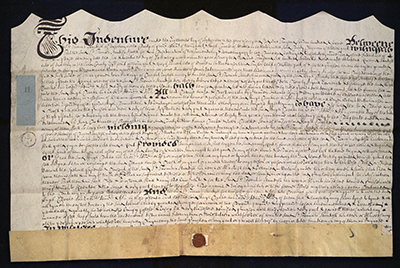
Ninety-Nine Year Lease
Sir Thomas Standish, Baronet of Duxbury to Hugh Crooke of Whittle-le-Woods, Chapman. Lease.
Whittle-le-Woods: 18 September 1704. English. Brown ink on parchment. 270 X 434 mm. One seal.
In order to avoid registering deeds, which was costly and cumbersome, land sales were often drafted as a “lease and release” which enabled the transaction to go unrecorded. The lessor/seller would lease the property to the lessee/buyer for a nominal rent, usually for a year, and the following day or shortly thereafter the lessor/owner relinquish their rights in the property to the lessee/buyer, and the transaction concluded.
which enabled the transaction to go unrecorded. The lessor/seller would lease the property to the lessee/buyer for a nominal rent, usually for a year, and the following day or shortly thereafter the lessor/owner relinquish their rights in the property to the lessee/buyer, and the transaction concluded.
In this document, the Standish family is not fully relinquishing control of the land. Instead, the land is leased for a 99-year term. The property in question is a cottage and croft (a small enclosed parcel of arable land, usually around a dwelling), purchased for three pounds sterling. The rent is four shillings and two hens at Christmas. A wheat kernel, barley corn, or peppercorn were also popular nominal rents for long-term leases.
Hugh Crooke used an H as his mark to execute the document.

